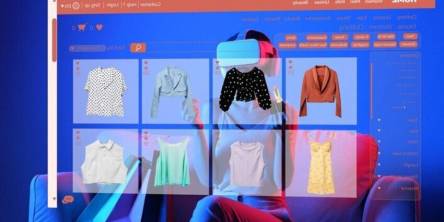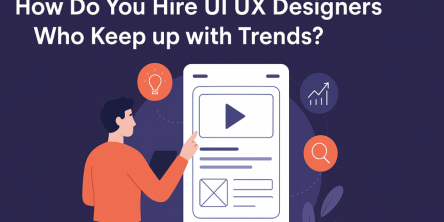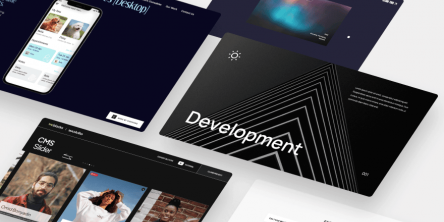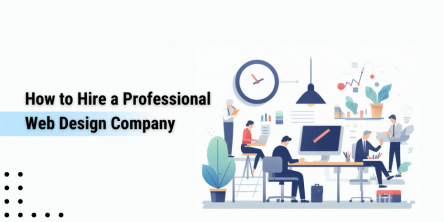A Complete Guide to the Different Types of Graphic Design

Graphic design plays a pivotal role in how we communicate visually. From branding and marketing to websites and packaging, every design serves a specific purpose.
If you've ever browsed a web design gallery or sought web design inspiration, you've likely encountered several categories of design, each with its unique approach and value.
In this blog, we’ll explore the major types of graphic design, highlighting their advantages and the roles they play across industries—from branding and advertising to web development and environmental design.
The most common types of graphic designs
1. Visual Identity Design
Visual identity forms the backbone of a brand's image, representing its values, tone, and personality through visual elements.
Key advantages:
- Builds strong brand recognition
- Maintains consistency across all marketing materials
- Creates a visual connection with the target audience
2. Web Design
Web design focuses on creating user-friendly, attractive, and responsive websites that engage visitors and drive results.
Specialties:
- Combines aesthetics with functionality
- Enhances user experience through intuitive layouts
- Adapts design for various devices and screen sizes
3. User Interface (UI) Design
UI design zeroes in on the elements users interact with on a digital platform, ensuring those elements are easy to use and visually appealing.
Why it matters:
- Improves navigation through logical interface components
- Boosts engagement through interactive design
- Provides visual cues that enhance usability
4. User Experience (UX) Design
UX design is all about the user journey. It aims to make digital products more useful, usable, and enjoyable.
Highlights:
- Focuses on user needs and behavior
- Increases user satisfaction and retention
- Streamlines tasks for faster, simpler interaction
5. Marketing & Advertising Design
This type of design supports promotional efforts across both digital and print formats, delivering compelling visual messages that attract and convert.
Key benefits:
- Drives audience attention through eye-catching visuals
- Supports brand messaging in campaigns
- Increases click-through rates and conversions
6. Packaging Design
Packaging design is a blend of art and strategy. It must protect the product, inform the consumer, and stand out on shelves.
Strengths:
- Differentiates products in a crowded market
- Communicates brand identity at the point of purchase
- Influences buying decisions through design appeal
7. Motion Graphic Design
Motion graphics bring static content to life through movement, offering a more dynamic way to tell stories and explain ideas.
Why use it:
- Captures attention quickly in digital spaces
- Simplifies complex messages through animation
- Enhances social media and video marketing
8. Publication Design
This includes the layout and visual design of printed and digital materials like books, magazines, and reports.
Notable advantages:
- Enhances readability with structured layouts
- Adds visual interest through typography and imagery
- Supports storytelling with balanced design
9. Environmental Graphic Design
Environmental design improves physical spaces through graphics, signage, and wayfinding systems.
Key purposes:
- Enhances the visitor experience in public and corporate spaces
- Reinforces branding in physical environments
- Helps guide users through spaces intuitively
Conclusion
Each type of graphic design plays a crucial role in how ideas are communicated and experiences are shaped. From creating visually striking brands to enhancing user interactions on websites, design influences both how we feel and how we act.
Choosing the right design style is not just about aesthetics—it’s about purpose, clarity, and connection.
Whether you're launching a new product, promoting a service, or simply improving the user experience, selecting the appropriate design type ensures your message is delivered effectively.
It can boost brand recognition, increase engagement, and build lasting impressions. For designers, marketers, and business owners alike, exploring creative possibilities through a web design gallery or seeking web design inspiration can open the door to fresh ideas and innovations.
By understanding the distinct functions and advantages of each design category, you empower yourself to make smarter visual choices—and ultimately, create designs that resonate deeply with your audience.
Similar Articles
Choosing the right e-commerce platform is very important. It affects how your online store looks and works. Magento and Shopify are two popular e-commerce platforms.
Whether you're just starting out in web development or you're looking to refine your craft, maste
In today’s digital world, user experience (UX) and user interface (UI) design play a crucial role in determining the success of a website, mobile app, or software product. Hiring UI UX designers who stay updated with the latest trends is essential to creating modern, user-friendly, competitive digital experiences.
A well-designed website can make all the difference in how potential clients perceive your accounting firm. It’s not just about aesthetics—it’s about functionality, professionalism, and trust.
Gone are the days when a lawyer's reputation was built solely on word-of-mouth referrals and a polished office downtown.
Do you know 75% of people form their opinion of a website based on its design? Therefore, it's essential to create a visually appealing and user-friendly website. You need to optimize many kinds of stuff to design a stunning and excellent user experience
How does a well-designed website make huge differences in the flow of visitors and their overall experience? With today's online presence being crucial, how do purposeful web design strategies work towards engaging users better and increasing traffic to your site?
In today's digital world, user-friendly web design is a critical factor in the success of any web resource. According to Adobe, visitors decide whether to stay or leave a website in just a few seconds based on its appearance and usability.
Your website is the online face of your business. It should reflect your brand, your values, and your goals. It should also attract and convert your target audience. But how do you find a web design company that can create a website that meets all these criteria?









